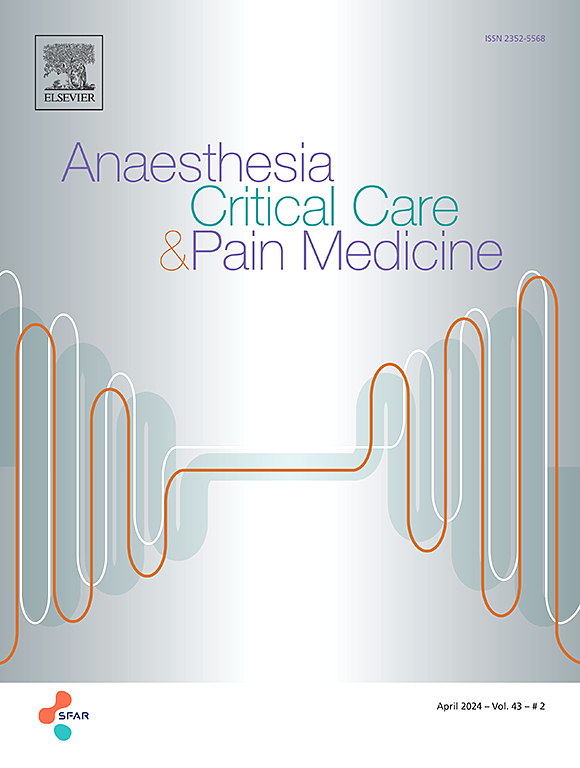一种可解释的机器学习方法用于预测危重患者临床上重要的胃肠道出血。
IF 4.7
3区 医学
Q1 ANESTHESIOLOGY
引用次数: 0
摘要
背景:临床上重要的胃肠道出血(CIGIB)是危重症患者的严重并发症,导致ICU住院时间延长和死亡率增加。尽管努力识别高危患者,但之前没有研究使用机器学习模型来预测ICU住院期间的CIGIB或确定这方面的关键预测因素。方法:本研究为单中心回顾性研究,纳入2017 - 2024年间收治的18岁及以上ICU患者。排除ICU住院时间少于24小时或入院24小时内GIB的患者。机器学习模型,包括XGBoost、Random Forest和l1正则化逻辑回归,使用ICU入院前24小时的患者数据进行训练。使用AUROC、精度、召回率和F1分数评估模型性能。采用Shapley加性解释(SHAP)评价关键预测因子。结果:共纳入7357例ICU患者,其中171例(2.3%)经历了CIGIB。XGBoost模型的预测性能最高,AUROC为0.84。关键预测因素包括APACHE III评分、红细胞压积水平、APTT、肌酐和呼吸频率,而有创机械通气和ICU入院前24小时内的应激性溃疡预防未进入SHAP值前20位预测因素之列。结论:本研究首次将机器学习应用于预测ICU患者的CIGIB,为风险分层提供了有价值的见解。该模型显示出较高的预测准确性和可解释性,突出了其指导早期干预和预防的潜力。需要进一步的多中心研究和介入试验来验证这些发现并完善临床风险预测策略。本文章由计算机程序翻译,如有差异,请以英文原文为准。
An interpretable machine learning approach for predicting clinically important gastrointestinal bleeding in critically ill patients
Background
Clinically important gastrointestinal bleeding (CIGIB) is a serious complication in critically ill patients, contributing to prolonged ICU stays and increased mortality. Despite efforts to identify high-risk patients, no previous studies have employed machine learning models to predict CIGIB during ICU stay or identify key predictors in this context.
Methods
This single-center retrospective study included ICU patients aged 18 years or older admitted between 2017 and 2024. Patients with ICU stays of less than 24 h or GIB within 24 h of admission were excluded. Machine learning models, including XGBoost, Random Forest, and L1-regularized logistic regression, were trained using patient data from the first 24 h of ICU admission. Model performance was assessed using AUROC, precision, recall, and F1 scores. Shapley Additive Explanations (SHAP) were employed to evaluate key predictors.
Results
A total of 7357 ICU patients were included, of whom 171 (2.3%) experienced CIGIB. The XGBoost model demonstrated the highest predictive performance with an AUROC of 0.84. Key predictors included APACHE III scores, hematocrit levels, APTT, creatinine and respiratory rate, while invasive mechanical ventilation and stress ulcer prophylaxis within the first 24 h of ICU admission did not rank among the top 20 predictors based on SHAP values.
Conclusions
This study represents the first application of machine learning for predicting CIGIB in ICU patients, providing valuable insights into risk stratification. The model demonstrated high predictive accuracy and interpretability, highlighting its potential to guide early intervention and prophylaxis. Further multi-center studies and interventional trials are needed to validate these findings and refine clinical risk prediction strategies.
求助全文
通过发布文献求助,成功后即可免费获取论文全文。
去求助
来源期刊

Anaesthesia Critical Care & Pain Medicine
ANESTHESIOLOGY-
CiteScore
6.70
自引率
5.50%
发文量
150
审稿时长
18 days
期刊介绍:
Anaesthesia, Critical Care & Pain Medicine (formerly Annales Françaises d''Anesthésie et de Réanimation) publishes in English the highest quality original material, both scientific and clinical, on all aspects of anaesthesia, critical care & pain medicine.
 求助内容:
求助内容: 应助结果提醒方式:
应助结果提醒方式:


